
Greece - narrow gauge trains
For a full scale picture, please click on the picture shown !
Diakofto - Kalavrita rack rail narrow gauge railway
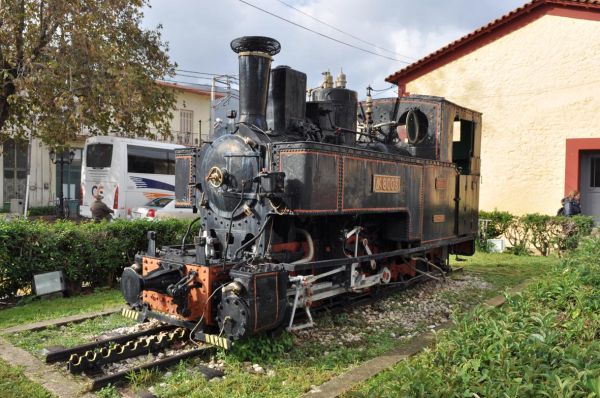
The Diakofto - Kalavrita railway is a 22,3 km long 750 mm gauge railway line climbing from Diakopto at sea level to Kalavrita, which is 720 metres higher up.
There are three sections with Abt type rack rails. Maximum gradient is 17,5%. After the era of steam locomotives, there was a plan to electrify the line and electric
multiple units were ordered from France. However, the electrification of the line never took place, and these new trains could only be used by putting a diesel
generator wagon in between the EMU coaches. This worked for many years. The newest trains on the line are made by the Swiss company Stadler.
This old steam locomotive now put on display as a monument is the DK-8003. It is a 0-6-2RT type small machine built by
Cail in 1891.
Picture from Diakofto 26.11.2018 by Marek Graff.
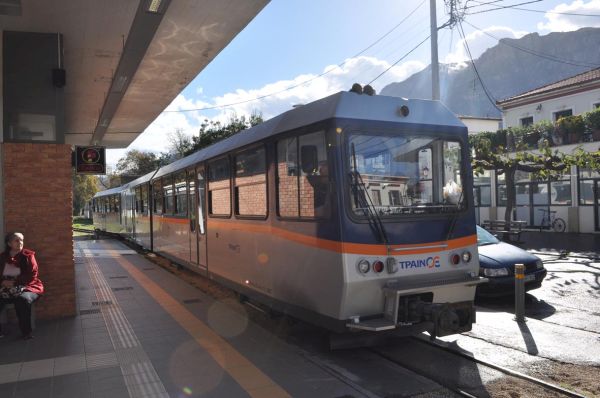
This is one of the new Swiss made Stadler trains. The train class is called 3107, which is the number given to the very first one of the new trains. There are
four of these new trains now and they were delivered in 2009.
Picture from Diakofto 26.11.2018 by Marek Graff.

One of the new Stadler class 3107 trains climbing uphill.
Public domain photo, copyright Marion Schneider & Christoph Aistleitner - Wikipedia username Mediocrity, 18.7.2009.

One of the new Stadler class 3107 trains at the station of Kalavrita.
Picture from Kalavrita 26.11.2018 by Marek Graff.
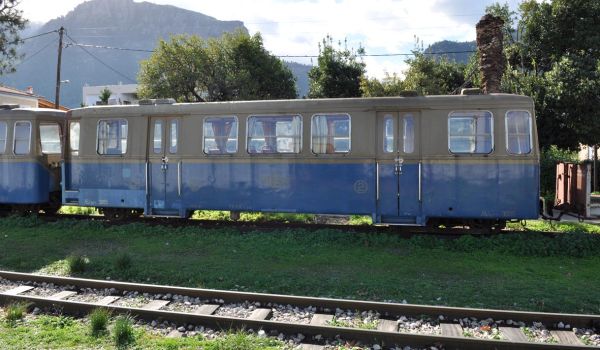
As already mentioned above, there was a plan to electrify the line in the 1950s and for this purpose new electric multiple units were ordered from
Billard in France. Billard delivered three trains, which were supposed to be two coach EMUs. But as nothing came out of the idea of electrifying the
line, extra diesel generator wagons were added in the middle of these Billard trains. This turned out to be a well working system and in 1967 three
more similar trains were ordered from Decauville in France. This no.3005 is one of those 1967 Decauvilles.
Picture from Diakopto 26.11.2018 by Marek Graff.
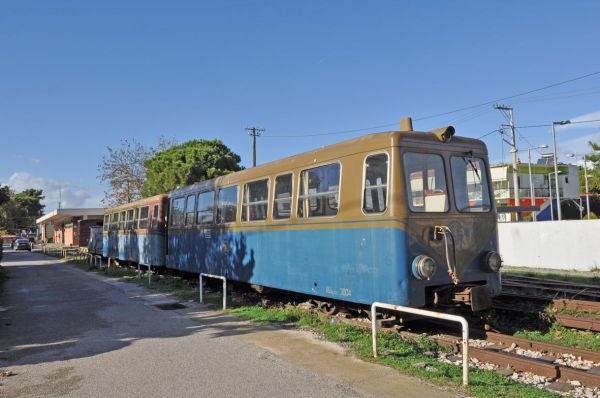
This no.3004 is another one of the Decauville trains from 1967. They are almost similar to the 1958 Billard models, but since these were right from the
beginning designed as diesel trains and not EMUs, these do not need an extra middle generatorwagon.
Picture from Diakopto 26.11.2018 by Marek Graff.
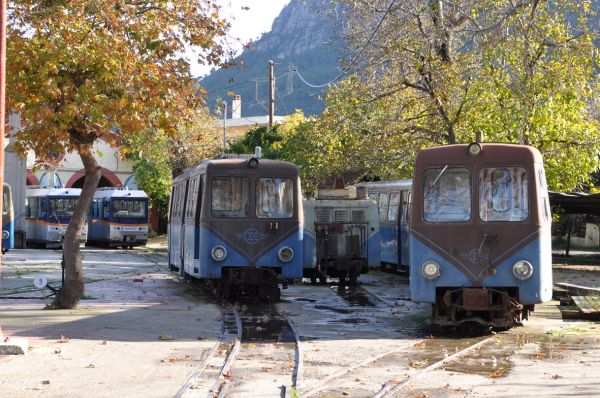
In the foreground old French Billard made trains from 1958. Between the two trains one of the extra generator wagons can be seen. In the background
on the left modern Stadler trains.
Picture from Diakopto 26.11.2018 by Marek Graff.
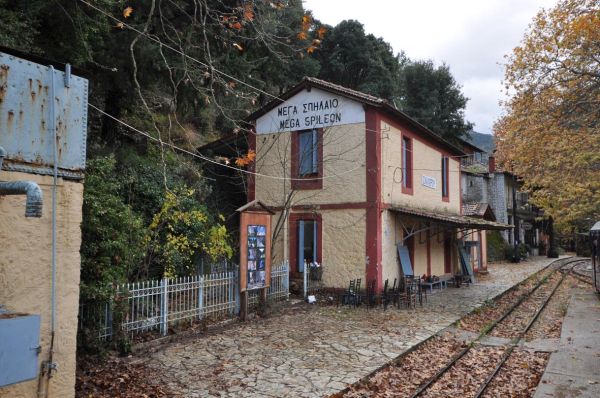
Mega Spileon station is one of those places underway where two trains can pass each other. The line is otherwise totally single track.
Picture 26.11.2018 by Marek Graff.
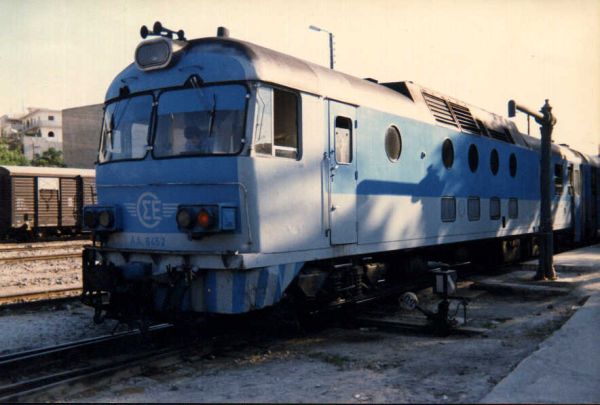
This is (or was) a metre gauge diesel multiple unit of the class 6450. Class 6450 was the four coaches long version and the three coaches long
was called 6460. These were built by Ganz-Mavag in Hungary. They had a power rating of 883 kW and a maximum speed of 120 km/h.
Picture 17.9.1993 at the Korinthos station by Dimitrios Koloniotis.
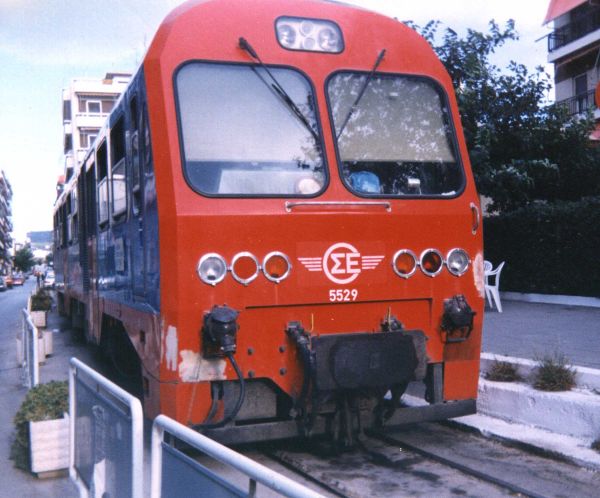
This was a metre gauge diesel multiple unit of the class 6520. These were to coaches long metre gauge railbuses built in 1991 by Greek Shipyards.
They had two MAN diesel engines. OSE used to use these trains on the Athina-Loutraki-Nafplio-Kalamata services.
Picture from Loutraki station on 20.09.1994 by Dimitrios Koloniotis.

